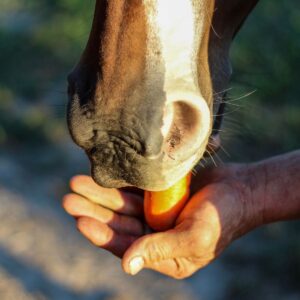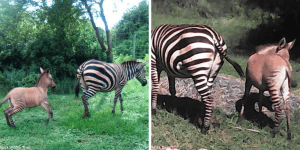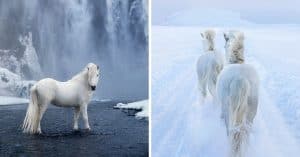Everyone including your four-year-old nephew knows that zebra have stripes. They're one of the most recognizable animals in the world thanks to their distinct black and white coat markings. But thanks to talented wildlife photographer Frank Liu, we're learning that a zebra's coat pattern isn't as predictable as we thought. The photographer was lucky enough to come across an extremely rare sight—a spotted zebra foal.
https://www.facebook.com/FrankLiuPhotography/photos/a.2295380704059448/2613992818864900/?type=3&theater
Liu was at the Maasai Mara National Reserve in Kenya hoping to photograph rhinos.
The Australian photographer has traveled the globe getting up close with nature and photographing amazing wildlife. During this trip to Kenya, he wrote on social media that a guide at the reserve came across a genetically mutated zebra foal. The guide named the baby after his last name, Tira. Liu was one of the first people to see the spotted zebra in real life and take its picture.
Seeing a zebra with spots instead of stripes was certainty surprising. But according to National Geographic, this baby's unique look is all about genetics. The mutation is called psuedo-melanism. It's extremely rare, and it causes animals to show abnormalities in the patterns of their stripes. In this case, it caused baby Tira's stripes to transform into spots.
https://www.facebook.com/FrankLiuPhotography/photos/a.2295380704059448/2613993042198211/?type=3&theater
Liu believes baby Tira is the first spotted zebra to be seen in the Masai Mara.
Wildlife officials have observed zebras with the same mutation in Botswana's Okavango Delta, but there's precious little information about these rare animals. Liu wrote on Instagram that at first glance, the foal looked like it was a completely different species. But with a closer look, it was clear Tira really is a zebra. She looked to be about a week old and was with her mother and the rest of her herd. She seemed to be in good health.
https://www.facebook.com/FrankLiuPhotography/photos/a.2295380704059448/2613993085531540/?type=3&theater
Tira's future, however, is uncertain. According to research, a zebra's distinctive coat pattern is about more than looking good. Scientists suggest the stripes evolved as a way to deter biting flies. Other theories say that stripes play a roll in temperature regulation and camouflage against predators. With spots instead of stripes, Tira is likely at a disadvantage. Her unusual coat pattern will make her stand out from the herd, and that's not a good thing when you're trying not to be noticed by a hungry lion. And without that natural fly deterrent, she's more at risk of contracting a disease (like equine influenza) that's spread by biting flies.
Horse Courses by Elaine Heney
- Listening to the Horse - The Documentary by Elaine Heney & Grey Pony Films
- Shoulder In & Out Training for better balance, bend & topline development with your horse
- Over 110+ Polework Exercises & Challenges to Download
- Dancing at Liberty & Creating Connection with Your Horse (11 lessons) - Grey Pony Films
But in good news, scientists say there's nothing that says Tira can't live a normal life within the herd. From the few other spotted zebras observed in the wild, it's believed these genetic abnormalities have no effect on the animal's ability to bond with other animals or mate.





Leave a Reply